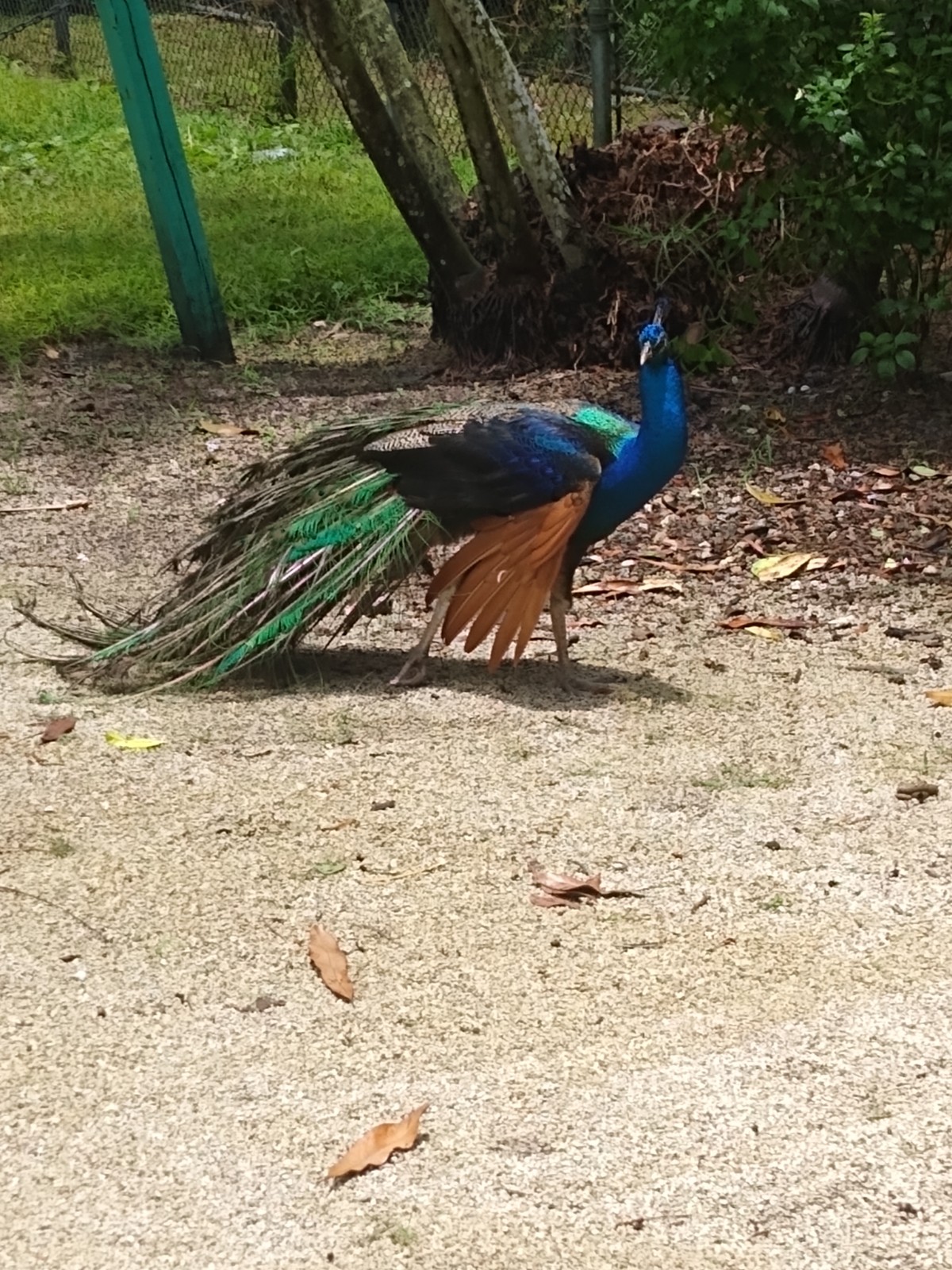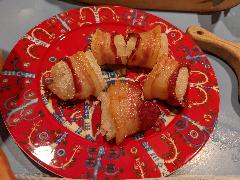 Few dishes are as mocked and reviled as lutfisk. It has a peculiar gummy texture, a strange translucency, and virtually no flavor.
Few dishes are as mocked and reviled as lutfisk. It has a peculiar gummy texture, a strange translucency, and virtually no flavor.
I've tried cooking lutfisk 4-5 times now, first by the most traditional versions, later with tips from lutfisk fans on the internet, some with melted butter, another with a bechamel sauce... some preparation hold the secret, right?
Finally, I tried my own version. Packaged lutfisk has little flavor of its own, so I wrapped it in bacon because bacon makes everything delicious.
Except lutfisk. It was amazing! The flavor of the bacon vanished, overwhelmed by the non-flavor of the lutfisk. I had to promise to my diners that my lutfisk studies are ended.

 Here's another of the homey-cozy-cold weather dishes that make up the Swedish Christmas julbord: stewed green peas made from dried peas. It's not pretty, but it tastes good and it's a good winter warmer.
Here's another of the homey-cozy-cold weather dishes that make up the Swedish Christmas julbord: stewed green peas made from dried peas. It's not pretty, but it tastes good and it's a good winter warmer.  Jansson's Temptation is apparently hugely popular in Sweden, but I can say that this unassuming casserole of shredded potatoes, onions, ansjovis, and cream was not a favorite at our
Jansson's Temptation is apparently hugely popular in Sweden, but I can say that this unassuming casserole of shredded potatoes, onions, ansjovis, and cream was not a favorite at our  Rotmos is Swedish for "root-mash". As you would expect, this is a simple dish of baked mashed root vegetables.
Rotmos is Swedish for "root-mash". As you would expect, this is a simple dish of baked mashed root vegetables. Here's a festive-looking and flavorful Christmas dish from Sweden that we served on the Julbord at our
Here's a festive-looking and flavorful Christmas dish from Sweden that we served on the Julbord at our 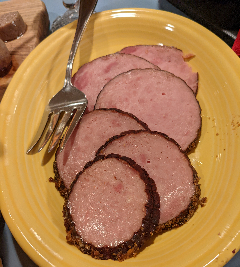 This is the traditional Swedish Christmas ham. It's an unsmoked ham, boiled and cooled, then glazed with mustard and coated with bread crumbs and briefly roasted to toast the glaze. It's served at room temperature on the julbord, and we enjoyed it in our
This is the traditional Swedish Christmas ham. It's an unsmoked ham, boiled and cooled, then glazed with mustard and coated with bread crumbs and briefly roasted to toast the glaze. It's served at room temperature on the julbord, and we enjoyed it in our 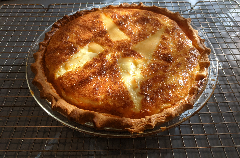 Here's a surprisingly simple, delicious pie for luncheon or breakfast that you can whip up in under an hour. It works best if all ingredients are at room temperature when you begin.
Here's a surprisingly simple, delicious pie for luncheon or breakfast that you can whip up in under an hour. It works best if all ingredients are at room temperature when you begin.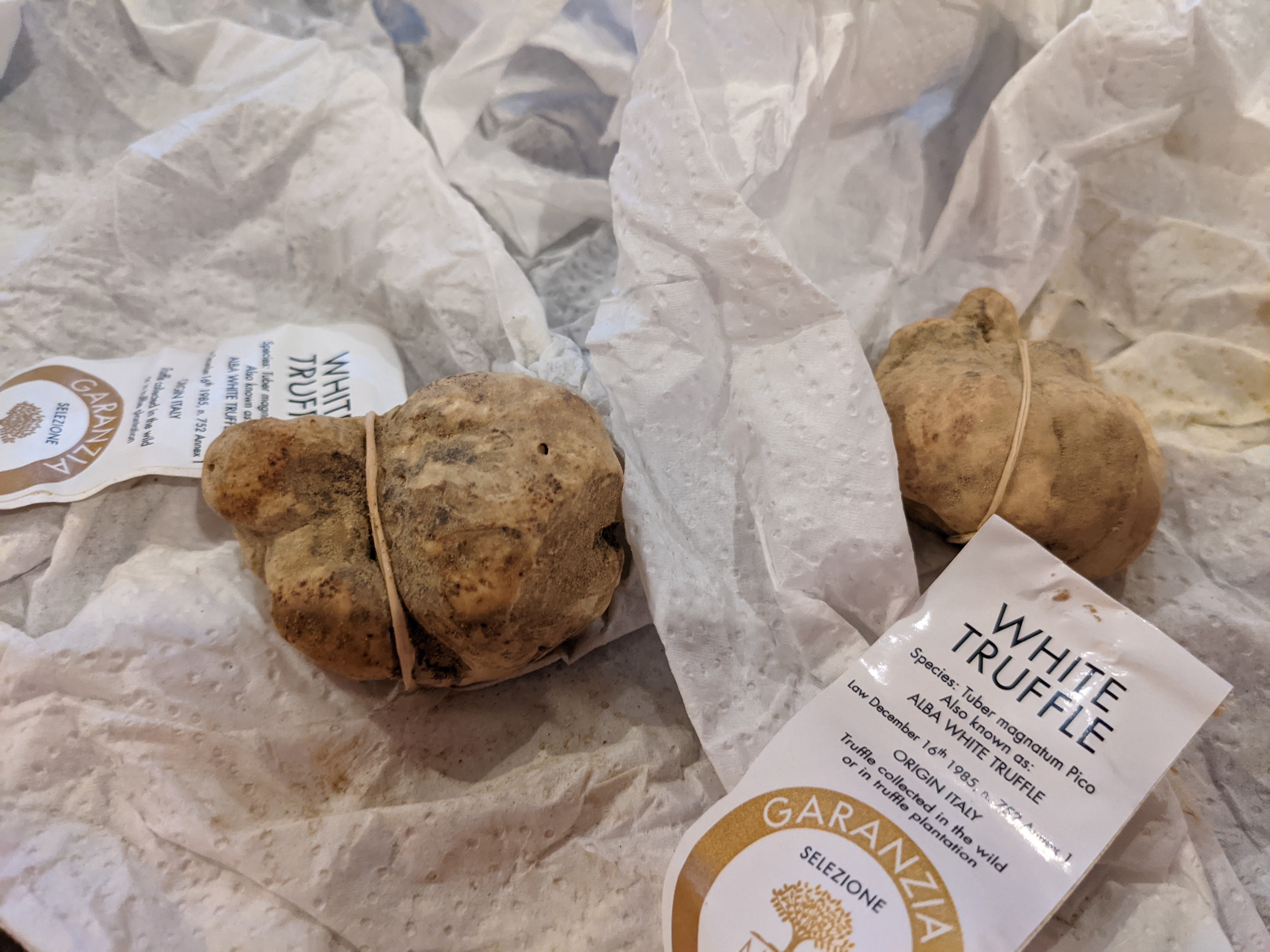 White truffles, Tuber magnatum, are even more expensive than black truffles, and they are used differently. They are seen more in northern Italian cuisine than anywhere else. The two you see here, one ounce each, cost $590 in November 2021!
White truffles, Tuber magnatum, are even more expensive than black truffles, and they are used differently. They are seen more in northern Italian cuisine than anywhere else. The two you see here, one ounce each, cost $590 in November 2021!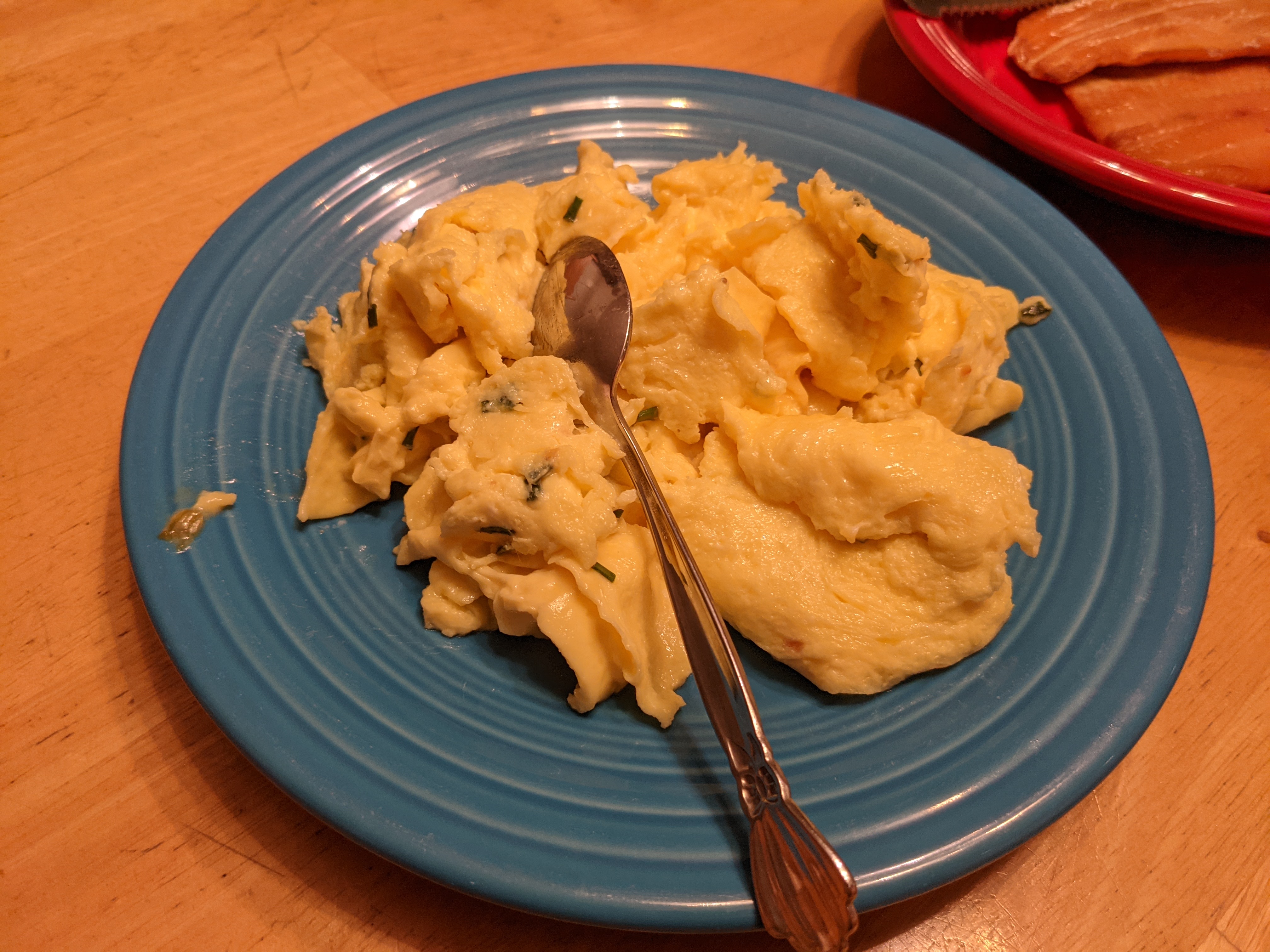 This classic combination is amazing, and amazingly expensive! I happened upon an opportunity to buy some white truffles in season from Alma Gourmet at a time when I had some extra cash to blow on an extravagance. I had read about and heard about white truffles, but I had never had the opportunity to try them myself, so I grabbed the opportunity, even though it was $295 for a one-ounce truffle. At least the shipping was free!
This classic combination is amazing, and amazingly expensive! I happened upon an opportunity to buy some white truffles in season from Alma Gourmet at a time when I had some extra cash to blow on an extravagance. I had read about and heard about white truffles, but I had never had the opportunity to try them myself, so I grabbed the opportunity, even though it was $295 for a one-ounce truffle. At least the shipping was free!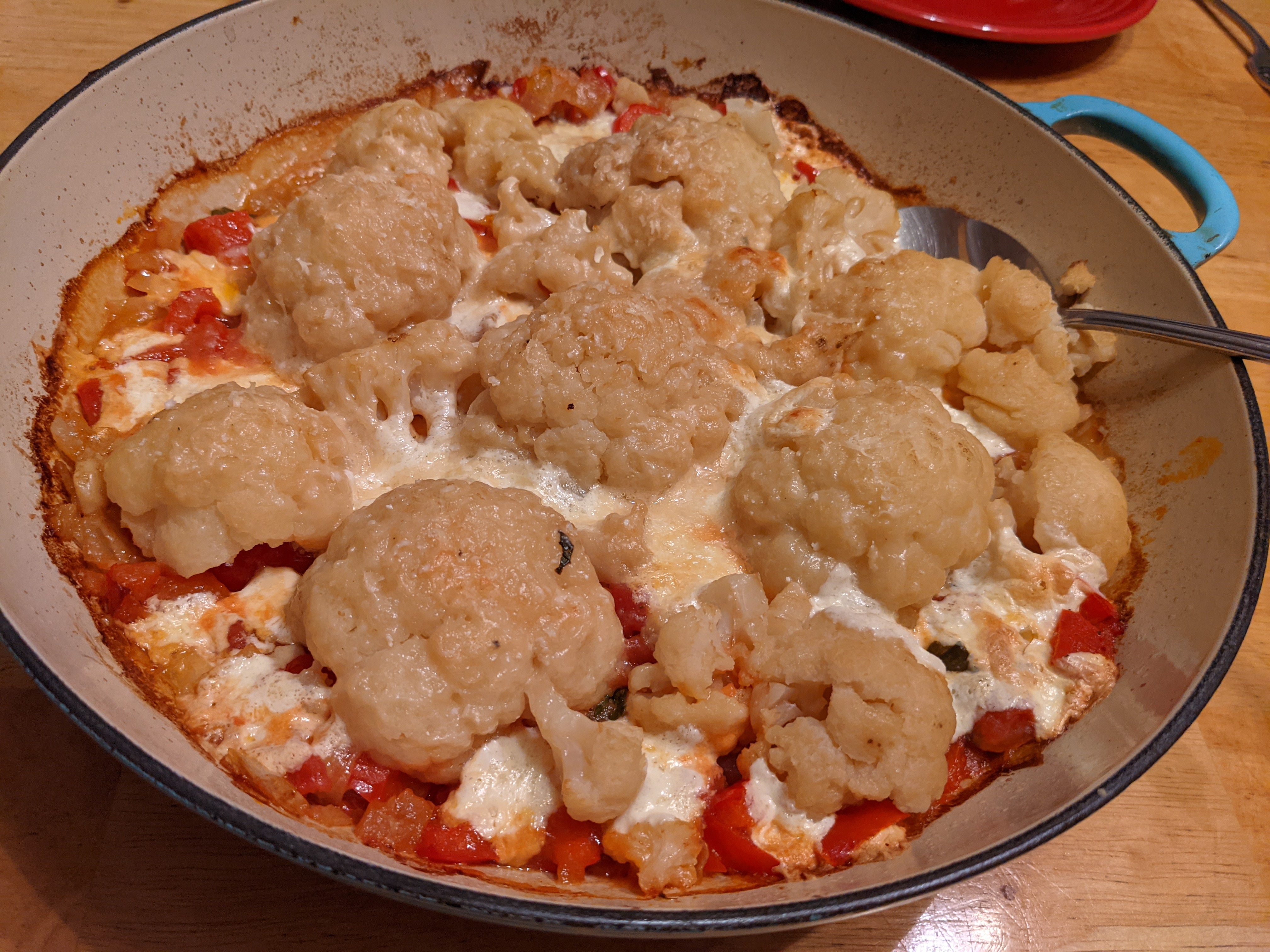 This is a simple, tasty dish that you can make whenever there are cauliflowers in the supermarket. The main flavors are cauliflower, tomato, and oregano. It's good enough as a standalone vegetarian dish or as an accompaniment to anything with an Italian flair.
This is a simple, tasty dish that you can make whenever there are cauliflowers in the supermarket. The main flavors are cauliflower, tomato, and oregano. It's good enough as a standalone vegetarian dish or as an accompaniment to anything with an Italian flair.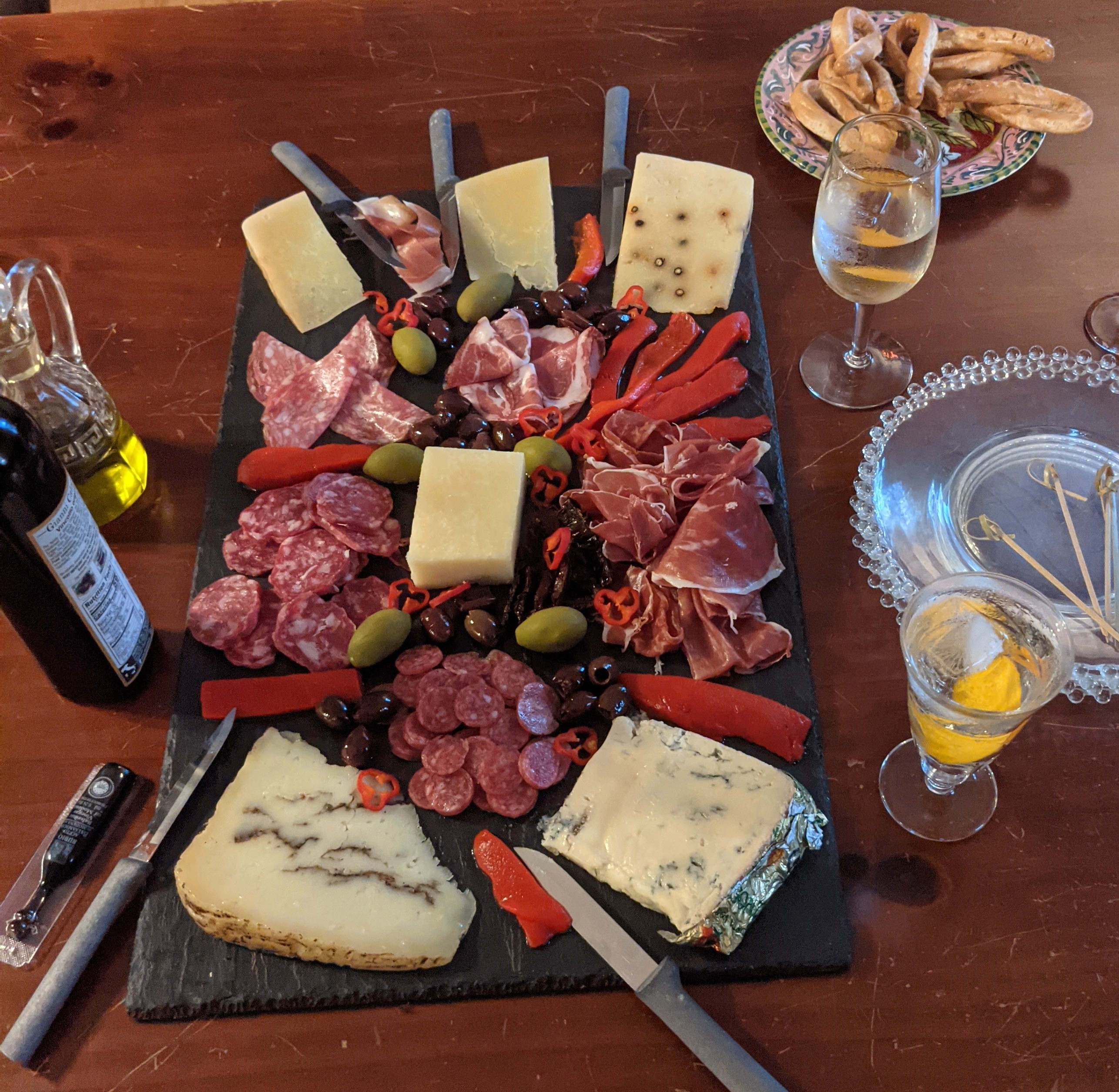 On September 5, '21, we celebrated the cuisine of central Italy with our friends and summertime neighbors Lance and Lynda Hylander. For this project, one of three recorded on this blog, I defined "Central Italy" as the six regions north of Campania/Apulia and south of Emilia-Romagna and the Po River valley, to wit: Tuscany, Umbria, Marche, Abbruzzo, Molise, and Lazio (Lazio is where Rome is).
On September 5, '21, we celebrated the cuisine of central Italy with our friends and summertime neighbors Lance and Lynda Hylander. For this project, one of three recorded on this blog, I defined "Central Italy" as the six regions north of Campania/Apulia and south of Emilia-Romagna and the Po River valley, to wit: Tuscany, Umbria, Marche, Abbruzzo, Molise, and Lazio (Lazio is where Rome is).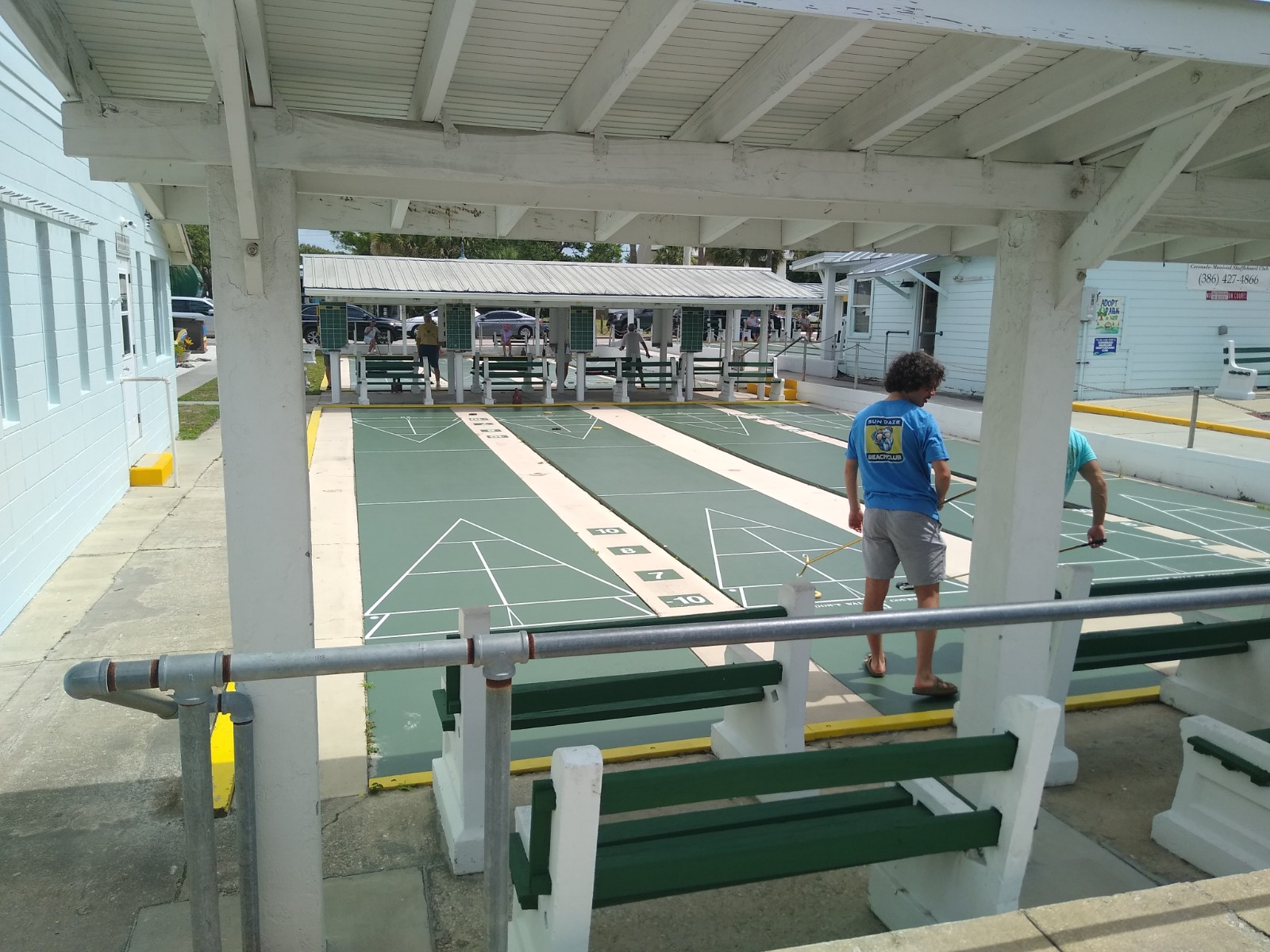 By Thursday we were winding down from our sprint along all of Florida's Atlantic coast. We joined Melissa and Bob for a leisurely drive to New Smyrna Beach for the afternoon, and then up to a Big Cat sanctuary north of Jacksonville to wrap up this adventure.
By Thursday we were winding down from our sprint along all of Florida's Atlantic coast. We joined Melissa and Bob for a leisurely drive to New Smyrna Beach for the afternoon, and then up to a Big Cat sanctuary north of Jacksonville to wrap up this adventure.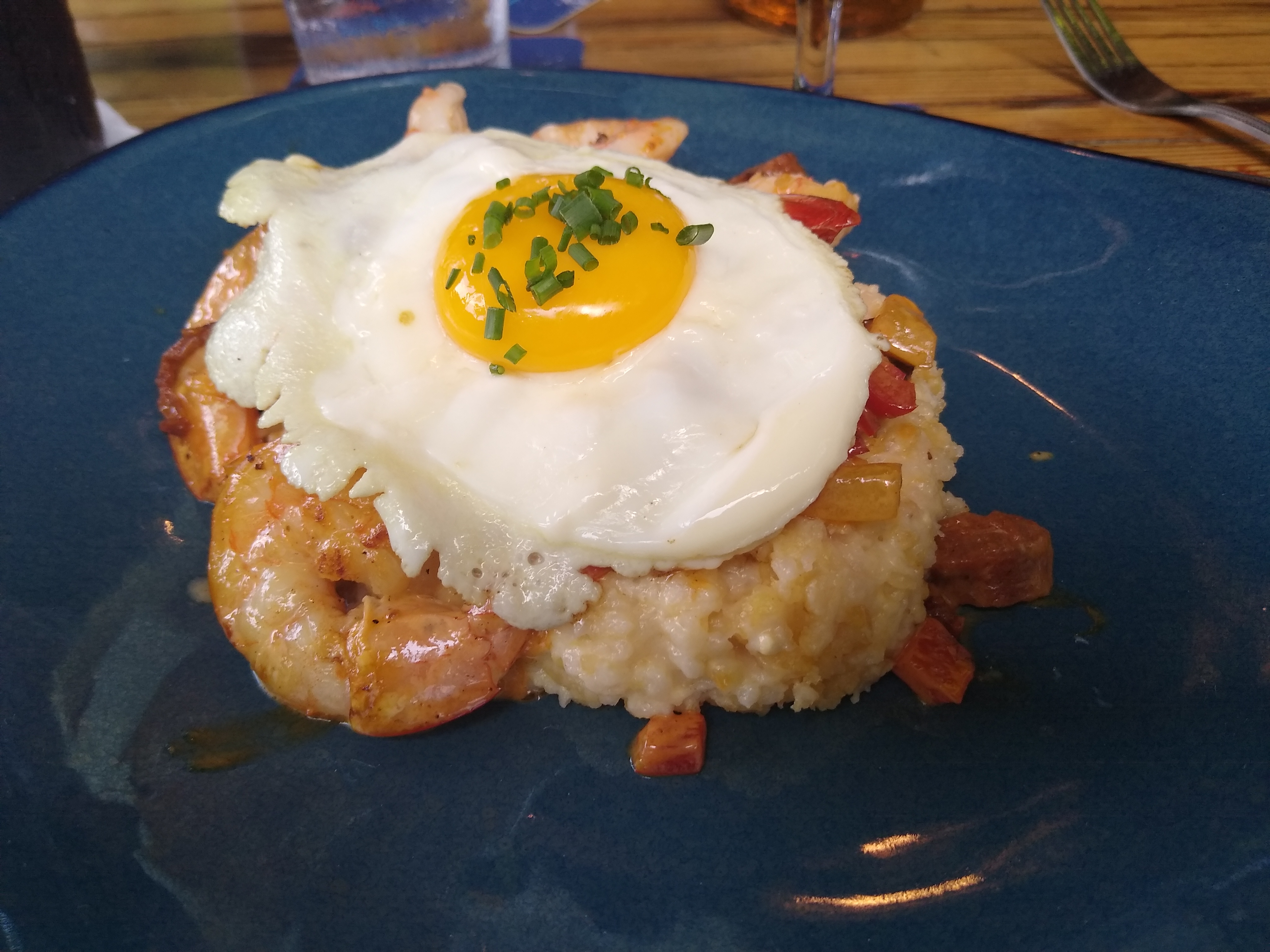
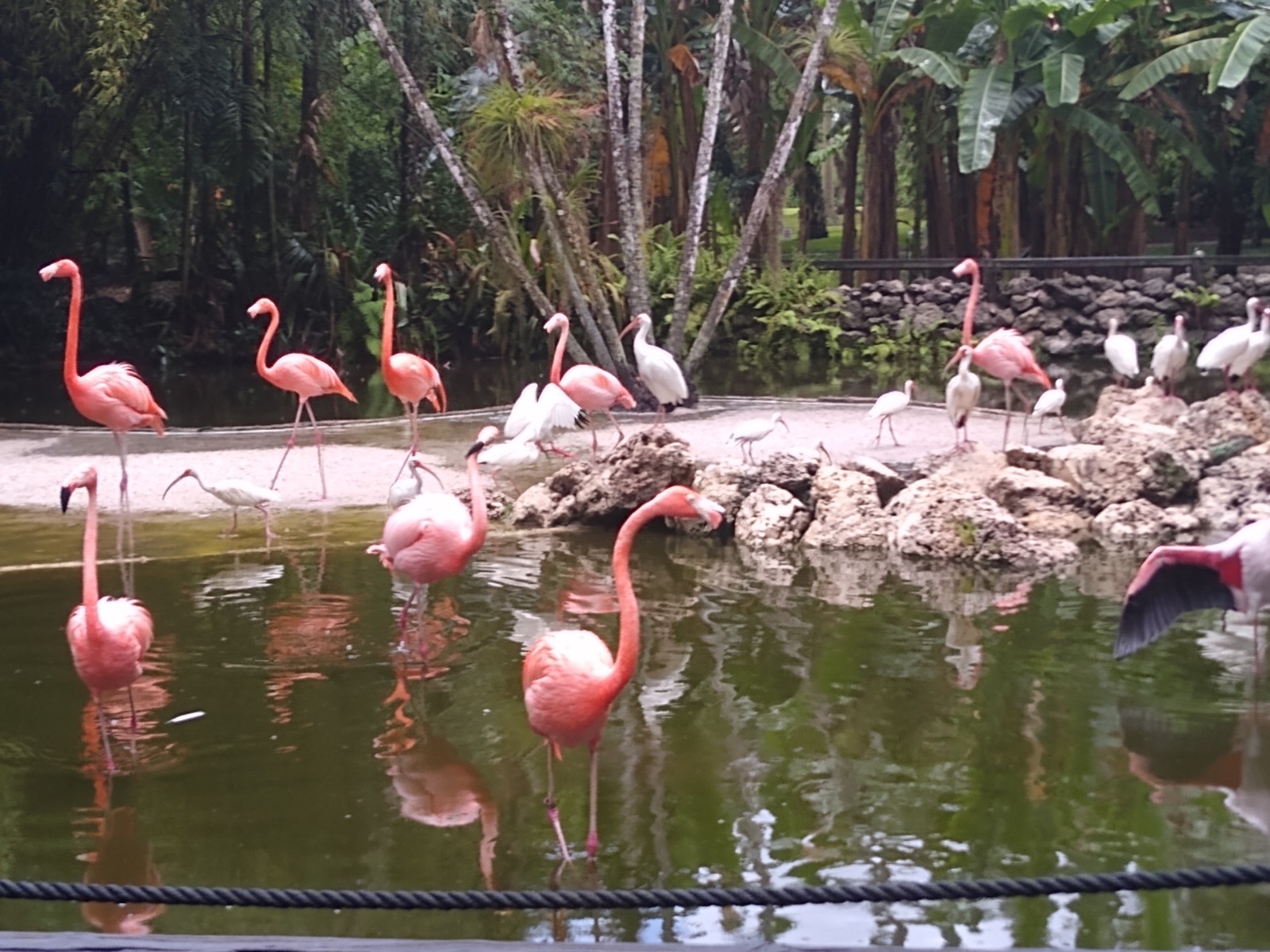 Key West is a long way from anywhere, and Marathon is just an hour closer. The drive back to the mainland, reversing the drive down, was uneventful, until we got to Key Largo. Then the rains came, in buckets. The road up to Homestead is straight and limited access, so everyone just pushed on at a slightly slower speed. The rain continued until we were just north of Miami.
Key West is a long way from anywhere, and Marathon is just an hour closer. The drive back to the mainland, reversing the drive down, was uneventful, until we got to Key Largo. Then the rains came, in buckets. The road up to Homestead is straight and limited access, so everyone just pushed on at a slightly slower speed. The rain continued until we were just north of Miami. 